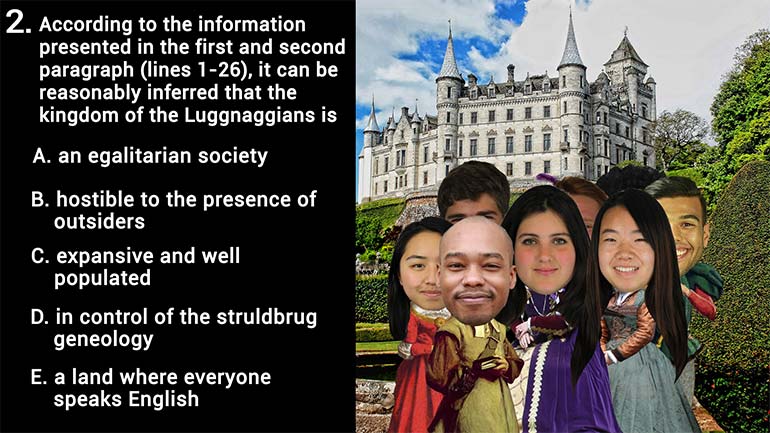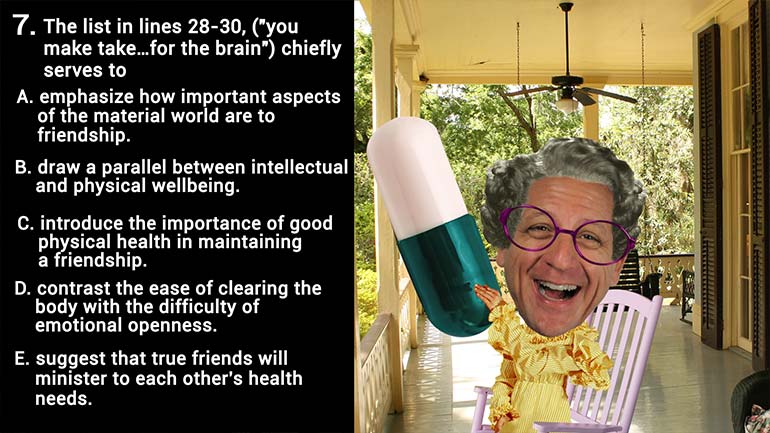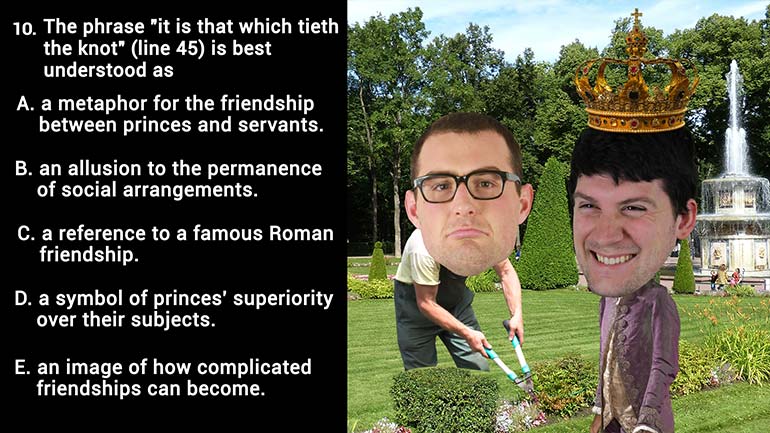ShmoopTube
Where Monty Python meets your 10th grade teacher.
Search Thousands of Shmoop Videos
AP English Literature: Creating a Somber Scene 5 Views
Share It!
Description:
The primary function of the phrase "Shadow-veiled as the years pass" in line 18 is to
Transcript
- 00:00
Sorry Okay just a few more on this poem And
- 00:12
just get right to the question Here we go The
- 00:14
primary function of the phrase shadow veiled as the years
- 00:18
passed in line eighteen Right there That's where I got
- 00:21
it from Lee didn't just make it up is what
Full Transcript
- 00:24
it's what to do What All right Well let's think
- 00:30
about The poets often use shadows as metaphors to evoke
- 00:34
a sense of carrying past sorrow and pain Right Just
- 00:38
thinking of throwing shade there just a shadows Follow the
- 00:42
poet So do these painful memories and emotions Well in
- 00:45
this way the sorrows continue past Mir events or initial
- 00:48
hurts or pain or paying Sze Yeah Now who said
- 00:52
that Shmoop doesn't have a dark side Alright so C
- 00:55
is the answer It highlights the continuance of our oh
- 00:58
well Veils are traditionally warned of funerals suggesting that this
- 01:02
metaphor could relate to the initial heartbreak like a would
- 01:05
have you believe But because the speaker includes the idea
- 01:09
of years passing the emphasis here is on the continuation
- 01:12
of sorrow not the initial loss of love A shadow
- 01:16
is sometimes used to mean that something is Justin illusion
- 01:19
But the opening line really drives home the fact that
- 01:21
love is gone period like de there And there's no
- 01:23
mystery about it It's gone People get over it Yeah
- 01:27
all right That's a dancer's see sorrow
Up Next
According to the information presented in the first and second paragraph (lines 1-26), it can be reasonably inferred that the kingdom of the Luggna...
Related Videos
In line 27, the adjective "inexpressible" is used
The main idea of the second paragraph (lines 24-33) can best be restated that
The list in lines 28-30, ("you make take sarza for the liver…castoreum for the brain") chiefly serves to
The phrase "it is that which tieth the knot" (line 45) is best understood as




